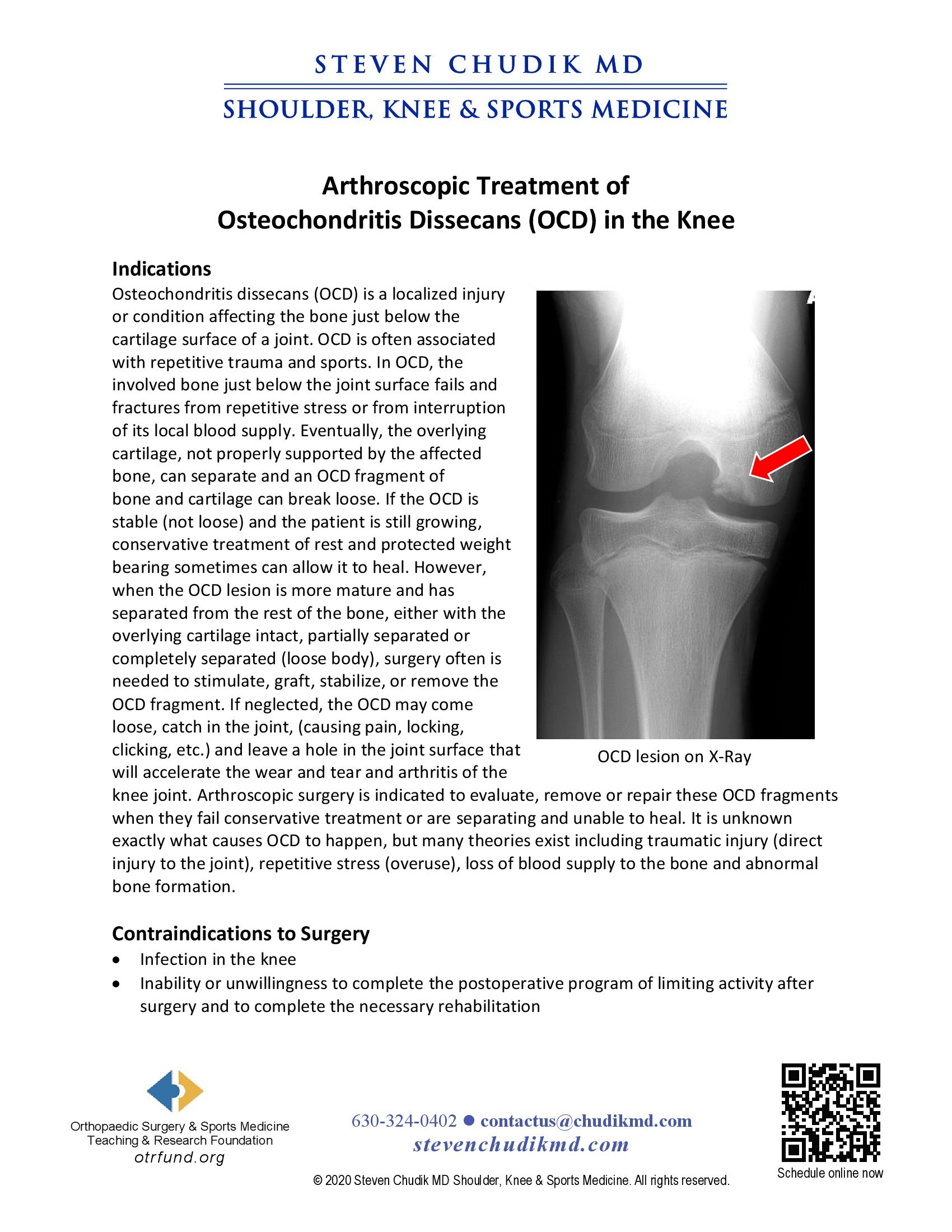 Don’t drink caffeine for an energy boost---climb the stairs
Don’t drink caffeine for an energy boost---climb the stairs
Osteochondritis dissecans (OCD) is a localized injury or condition affecting the bone just below the cartilage surface of a joint. OCD is often associated with repetitive trauma and sports. In OCD, the involved bone just below the joint surface fails and fractures from repetitive stress or from interruption of its local blood supply. Eventually, the overlying cartilage, not properly supported by the affected bone, can separate and an OCD fragment of bone and cartilage can break loose. If the OCD is stable (not loose) and the patient is still growing, conservative treatment of rest and protected weight bearing sometimes can allow it to heal. However, when the OCD lesion is more mature and has separated from the rest of the bone, either with the overlying cartilage intact, partially separated or completely separated (loose body), surgery is often needed to stimulate, graft, stabilize, or remove the OCD fragment. If neglected, the OCD may come loose, catch in the joint, (causing pain, locking, clicking, etc.) and leave a hole in the joint surface that will accelerate the wear and tear and arthritis of the knee joint. Arthroscopic surgery is indicated to evaluate, remove or repair these OCD fragments when they fail conservative treatment or are separating and unable to heal. It is unknown exactly what causes OCD to happen but many theories exist including traumatic injury (direct injury to the joint), repetitive stress (overuse), loss of blood supply to the bone, and abnormal bone formation.
Some OCDs can be repaired while others cannot, depending on the size, location, age, etc. of the lesion. In either situation, Dr. Chudik evaluates and treats OCDs through small limited incisions and specialized instruments of his own design with the use of an arthroscope (small camera). Lesions that cannot be repaired can be removed with special instruments and the hole left in the bone and cartilage can be smoothed of any rough edges or unstable flaps and stimulated to fill in with reparative tissue. Other OCD lesions can be repaired in a variety of ways depending on the location and size of the OCD lesion. Dr. Chudik developed novel techniques to be able to come in from behind the cartilage (retrograde) with drilling and bone grafting to fill the hole and create a stable joint surface. Dr. Chudik will discuss various options with you and help determine the best treatment for you.
Learn More
Dr. Chudik published anatomic studies and developed special techniques and instruments to safely approach OCD lesions from behind to repair them without damaging the overlying cartilage.
click the link below to learn more
Learn More